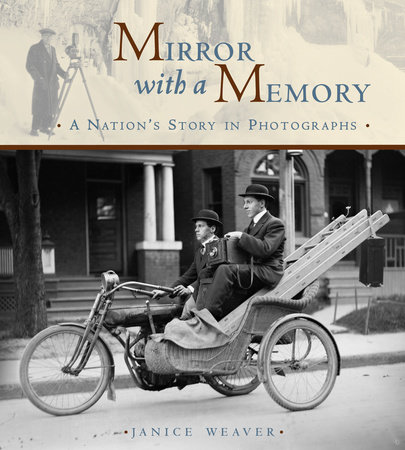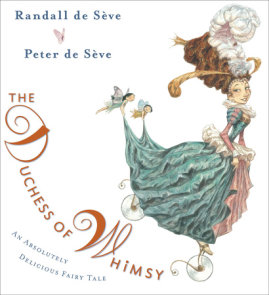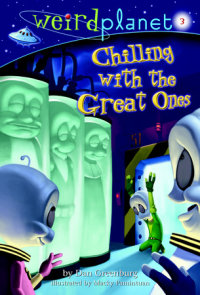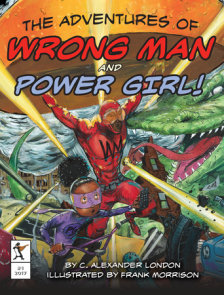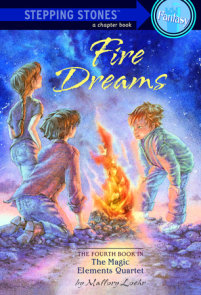TEACHING GUIDE
ABOUT THIS BOOK
Canada and the art of photography came into existence together in the middle of the nineteenth century. Both had shaky beginnings – one was an upstart country struggling to emerge from the shadow of its great
neighbor, the other a rough art form capable of capturing only blurred, grainy images – but each eventually came into its own.
Today, Canada is a bold and prosperous nation, while photography, in the words of master lensman Edward Steichen, is “a major force in explaining man to man.” Mirror with a Memory is a photographic
journey through the history of this country. It includes those famous shots that have defined a nation; from the Fathers of Confederation grouped stiffly on the steps of Charlottetown’s Confederation Hall to
the massive Maple Leaf flag drifting over the heads of federalists on the eve of the 1995 Québec referendum. But the book also features the faces of ordinary Canadians going about their everyday lives – a family
of newly arrived, turn-of-the-century immigrants on the platform at Toronto’s Union Station; pith-helmeted soldiers at a Boer War field hospital in South Africa; women greasing themselves up for a marathon swim.
Through extended captions and the photographs themselves, Mirror with a Memory brings to life the story of Canada from Confederation to the present day.
In the end, it gives us an unforgettable portrait of the people and events that forged a nation.
ABOUT THIS AUTHOR
Janice Weaver is a noted author of nonfiction for young people. Her books Building America and From Head to Toe: Bound Feet, Bathing Suits, and Other Bizarre and Beautiful Things were both named Notable Books by the International Reading Association. From Head to Toe was also nominated for the Rocky Mountain Book Award (An Alberta Children’s Choice Award) and the Ontario Library Association’s Red Maple Award. Weaver is also the author of The A to Z of Everyday Things and the co-author of It’s Your Room, which was a finalist for the Red Maple Award. She lives in Toronto.
TEACHING IDEAS
Language Arts
Ask students to write down unfamiliar words and try to define them from the context in which they’re used. These words may include daguerreotype (p. 9), shutterbug (p. 10), entrepreneur (p. 28), sovereignty (p. 29), indentured servitude (p. 33), macabre (p. 37), impoverished (p. 48), sledge (p. 53), transcontinental (p. 60), conscription (p. 80), suffrage (p. 82), saboteur (p. 106), centennial (p. 140), proclamation (p. 144), and patriation (p. 144).
Ask students to consider the adage “A picture is worth a thousand words.” Have students select one photograph from the book and create a story around it, writing as much as they can.
SOCIAL STUDIES
Some photographs have quite literally changed the world. Dorothea Lange’s images of poverty-stricken migrant farmworkers in California in the 1930s built support for government relief programs. The photograph of a naked girl fleeing a napalm attack helped turn public opinion against the Vietnam War. Research some other famous photographs and discuss how they have altered people’s perceptions of the world. Photography provides a visual record of how attitudes and mores have changed over time. Look at the way women were portrayed in nineteenth-century photographs and compare that to the depiction of women today. Research some celebrated female photographers, like Margaret Bourke-White and Diane Arbus, and discuss what impact, if any, they had on the way women were represented.
MEDIA LITERACY
Photographs are sometimes used as propaganda, to promote certain positions or beliefs or to influence people’s thinking. Propaganda can be overt, as in the staged World War I photographs of Canadian soldiers charging into battle, or more subtle, as in advertising that’s designed to sell a product. Ask
students to choose some modern photographs and decode the messages they are sending. Although photography wasn’t invented until the mid-1800s, its roots stretch back centuries, to the camera obscura. Ask students to research the camera obscura and make one of their own. Have them explore how the medium has changed over time. What impact are new technologies like digital cameras and cellphones having on the way we take, distribute, and preserve photographs?
Most of the photographs in the book come from federal, provincial, and municipal archives. Discuss the role archives play in the preservation of photographs and in making them available to the general public. How are commercial archives different from government archives? Are commercial archives making important photographs more or less accessible? What role does copyright law play in all this?
It has been said that the camera never lies. But behind every camera there stands a photographer making decisions about what to include and what to leave out. A few famous photographs have even turned out to be staged or altered in some way. Is its impact lessened if we know it has been staged? Study some famous staged or altered photographs and discuss their influence on public opinion.
VISUAL ARTS
There are many different types of photography, including photojournalism, documentary photography, portraiture, and commercial photography. Have students research these fields and explore their similarities and differences. Ask them to create a photoessay using well-known examples of each type. Canada is an immense place of wild beauty that lends itself to being photographed. Not surprisingly, it has been home
to many celebrated shutterbugs, including William Notman, probably the country’s most famous photographer. Ask students to research other well-known Canadian photographers. How does their work reflect their perceptions of this country and its people?
William Notman was especially well known for his composite photographs. To make a composite, Notman would take portraits of dozens of individuals, cut them out, and paste them to a background. Each person had to be posed with every other person in the photo in mind, and those in the background had to be captured at a smaller size, to create the proper perspective.
Have students make their own composite images using photographs cut from magazines or newspapers. Ask them to paint a special background and then draw in shadows and highlights after their composite is assembled.
DISCUSSION AND WRITING
1. The photograph of a man sitting among the skeletons of some dead Crow Indians (p. 20) greatly influenced the public’s perception of westward expansion. Why?
2. The men who built the Canadian Pacific Railway posed for their own version of “the last spike.” What are the differences between the two images (pp. 26—27), and why would the workers have wanted their own photograph of the event?
3. Memorable contemporary Canadian photographs include the soldier and the Mohawk protester facing off (p. 51), Paul Henderson scoring his famous goal (p. 131), and the giant Canadian flag floating over the heads of federalists (p. 149). Why have these images had such an impact? What makes them so unforgettable?
4. Transportation has long been a favorite subject of photographers. What technological advances made it possible for them to capture movement more effectively?
5. Photographers created a stunning visual record of the building of the Canadian Pacific Railway. Discuss how these photographs also helped bring prosperity to the West.
6. The Depression-era photographs of a Bennett buggy (p. 67) and a destitute Edmonton family (p. 46) are early examples of documentary photography. How does documentary photography differ from other types?
7. In the photograph on p. 84, celebrants have mistakenly taken to the streets of Victoria, British Columbia, four days before the World War I peace agreement was actually signed. Discuss the ways information was spread in the early 1900s. How are things different today? Could such a mistake happen in modern times?
8. Study the two photos of women working in the war industries (pp. 83 and 87). How did the world wars change the status and perceptions of women in society? Did those changes carry over into the post-war world?
9. The photograph of the children wearing gas masks (p. 88) shows how paranoia and fear can influence people’s behavior. What are some other examples of people being carried away by their own fears? Are there any parallels to the post-9/11 world?
10. Why do catastrophes and disasters make such great subjects for photographs? What are some famous disaster photos, other than those included in the book? Why do those images resonate with us so strongly?
11. After the Princess Sophia sank in 1918, Canadian Pacific destroyed all its photographs of the ship. Why would the company want to erase the Sophia from its records? Why is it important to preserve photographs, even of events we might prefer to forget?
12. The photograph on p. 142 of a young girl strolling past an armed Canadian solider in downtown Montréal had a great impact on public opinion during the October Crisis in the 1970s. Why was this particular photograph so influential?
13. The photographs of the Springhill mine survivors (p. 115), Terry Fox on his Marathon of Hope (p. 147), and the giant Canadian flag at a federalist rally (p. 149) are fine examples of photojournalism. What impact has photojournalism had on the way we receive and evaluate information? Why do images sometimes carry more impact than words alone? Who are some of Canada’s best-known photojournalists, and what are some of their most famous photos?
OTHER TITLES OF INTEREST
Canada: An Illustrated History
by Derek Hayes
ISBN 1553650468
Early Photography in Canada
by Ralph Greenhill
Oxford University Press 1965
The Illustrated History of Canada
edited by Craig Brown
ISBN 1550139347
100 Photographs That Changed the World
by the Editors of Life Magazine
ISBN 978-1931933841
Photographs That Changed the World: The
Camera as Witness, the Photograph as Evidence
by Lorraine Monk
ISBN 0921912013
Sometimes a Great Nation:
A Photo Album of Canada, 1850—1925
by Edward Cavell
ISBN 0919381138
The Story of Canada
by Janet Lunn and Christopher Moore
ISBN 1895555329
ADDITIONAL RESOURCES
http://www.gov.mb.ca/chc/archives/
http://www.archives.gov.on.ca
http://www.bcarchives.gov.bc.ca/index.htm
http://www.cprheritage.com/
http://www.toronto.ca/archives/index.htm
http://www.glenbow.org/collections/archives/
http://www.gov.mb.ca/chc/archives/hbca/
http://www.collectionscanada.ca/
http://www.mccord-museum.qc.ca/en/
×
Become a Member
Just for joining you’ll get personalized recommendations on your dashboard daily and features only for members.
Find Out More Join Now Sign In








